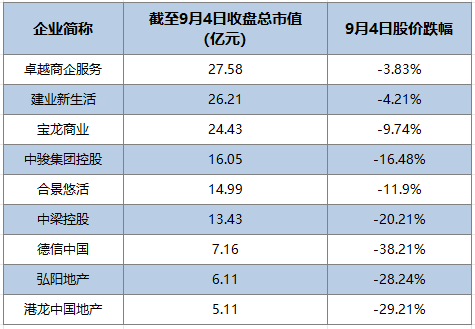The China Factor: Analyzing Market Difficulties For BMW, Porsche, And Other Automakers

Table of Contents
Intensified Domestic Competition
The Chinese automotive landscape is undergoing a dramatic transformation, characterized by intensified domestic competition. This presents a formidable challenge for established international players like BMW and Porsche.
Rise of Domestic EV Brands
The rapid ascent of Chinese electric vehicle (EV) manufacturers like BYD, NIO, and Xpeng is dramatically reshaping the market. These brands are not just niche players; they are major forces, directly impacting the market share of long-established international brands.
- Competitive Pricing and Technology: These domestic brands offer compelling pricing strategies, often incorporating advanced technology and features tailored specifically to Chinese consumer preferences. This includes sophisticated infotainment systems, advanced driver-assistance systems (ADAS), and customized user interfaces.
- Government Support: Government subsidies and incentives significantly bolster the competitiveness of domestic EV players, making them even more attractive to price-sensitive consumers. These policies aim to accelerate the adoption of electric vehicles within China.
- Rapid Innovation: The pace of innovation within these Chinese EV companies is staggering, forcing international brands to invest heavily in their own EV development and production to remain competitive. This requires significant R&D investment and rapid adaptation to changing technologies.
Aggressive Pricing Strategies
Chinese automakers are employing increasingly aggressive pricing strategies, putting immense pressure on the profit margins of foreign competitors. This competitive pressure is forcing a reassessment of business models for international automakers.
- Discounts and Bundles: Substantial discounts and bundled offers are commonplace, making it difficult for international brands to compete on price without compromising profitability.
- Price Wars: The potential for price wars further intensifies the pressure, forcing companies to make tough choices between market share and profitability. This necessitates a refined understanding of the Chinese consumer and their price sensitivity.
Navigating Regulatory Hurdles and Supply Chain Disruptions
Beyond competition, international automakers face significant regulatory hurdles and supply chain vulnerabilities within the Chinese market. These factors add layers of complexity to operating within the country.
Stringent Emission Regulations
China's increasingly stringent emission standards and regulations represent a considerable challenge. Meeting these standards necessitates substantial investments in research and development (R&D) and the adaptation of manufacturing processes.
- Costly Upgrades: Compliance requires costly upgrades to vehicle technologies and manufacturing processes, impacting overall production costs.
- Penalties for Non-Compliance: Failure to meet these standards results in significant penalties and can severely limit market access. This necessitates proactive and thorough compliance strategies.
Supply Chain Vulnerabilities
The global supply chain disruptions have disproportionately affected the automotive industry in China, causing production delays and increased costs. This highlights the interconnectedness of the global economy and the vulnerability of multinational companies.
- Global Supply Chain Reliance: International automakers heavily rely on global supply chains, making them vulnerable to disruptions caused by geopolitical events, pandemics, or natural disasters.
- Sourcing Challenges: Securing reliable and cost-effective sourcing becomes increasingly critical for sustained operations in China. This requires diversification and robust risk management strategies.
Geopolitical Uncertainties
Increasing geopolitical tensions and trade uncertainties further complicate the operating environment for foreign automakers in China. These factors are beyond the control of individual companies, requiring careful navigation.
- Trade Disputes and Political Shifts: Trade disputes and political shifts can significantly impact market access and investment decisions, creating uncertainty and risk.
- Risk Mitigation: Robust risk management strategies are crucial for mitigating the impacts of these external factors. This includes proactive monitoring of geopolitical developments and diversification of operations.
Understanding Evolving Consumer Preferences
The Chinese automotive market is characterized by evolving consumer preferences, which international automakers must understand and adapt to. These shifts demand a deep understanding of the local market and its nuances.
Shifting Brand Loyalty
Chinese consumers are showing a growing preference for domestic brands, challenging the established brand loyalty traditionally enjoyed by international players. This shift is influenced by several factors.
- National Pride: Patriotism and national pride play a significant role in consumer choices, leading to increased support for domestic brands.
- Building Relationships: International brands need to foster stronger relationships with Chinese consumers, emphasizing local engagement and understanding of cultural preferences.
Technological Sophistication
Chinese consumers are increasingly tech-savvy, demanding advanced technological features in their vehicles. This fuels a rapid pace of technological advancement within the industry.
- Digital Features and Connectivity: The integration of digital features, connectivity, and autonomous driving capabilities is paramount for attracting tech-savvy Chinese consumers.
- R&D Investment: International automakers must invest heavily in R&D to stay competitive and meet the demands for advanced technology.
Conclusion
The China factor presents a complex and evolving landscape for international automakers like BMW and Porsche. Successfully navigating the intense domestic competition, regulatory hurdles, supply chain complexities, and evolving consumer preferences requires strategic adaptation, significant investment, and a deep understanding of the unique dynamics of the Chinese market. Ignoring "The China Factor" is not an option; understanding and addressing these challenges is crucial for long-term success in this vital market. To thrive in this dynamic environment, international automakers must proactively develop strategies to effectively manage "The China Factor" and secure their position in the world's largest automotive market. Understanding and responding effectively to the nuances of The China Factor is essential for continued success in this pivotal market.

Featured Posts
-
 Is Jackbit The Best Crypto Casino For Fast Withdrawals
May 17, 2025
Is Jackbit The Best Crypto Casino For Fast Withdrawals
May 17, 2025 -
 112
May 17, 2025
112
May 17, 2025 -
 Where To Watch The Indiana Fever Preseason Games Featuring Caitlin Clark In 2025
May 17, 2025
Where To Watch The Indiana Fever Preseason Games Featuring Caitlin Clark In 2025
May 17, 2025 -
 Tenis Mensik Otkriva Dokovicevu Ulogu U Njegovom Uspehu
May 17, 2025
Tenis Mensik Otkriva Dokovicevu Ulogu U Njegovom Uspehu
May 17, 2025 -
 Trumps Humiliation Lawrence O Donnell Captures A Defining Moment
May 17, 2025
Trumps Humiliation Lawrence O Donnell Captures A Defining Moment
May 17, 2025
